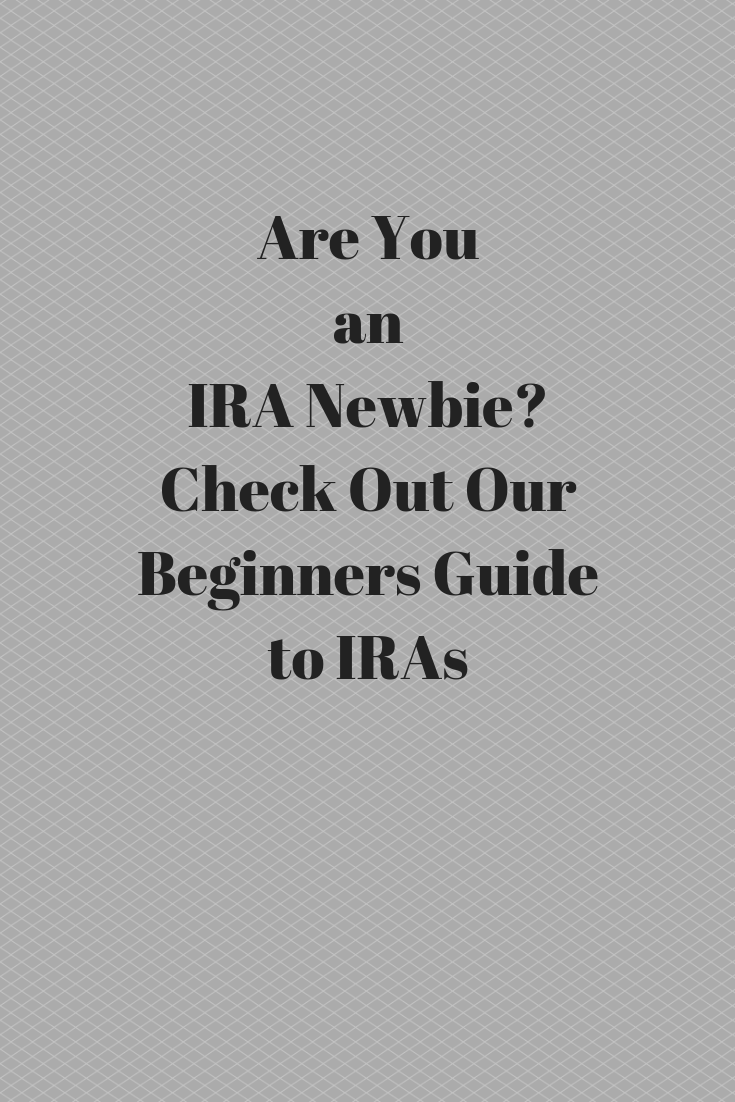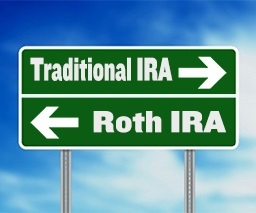If you are an IRA newbie and don’t have any investing experience, opening an IRA can seem quite intimidating. Fortunately, its quite easy for beginners to start investing in an IRA, whether through a bank, an investment advisor or online.
But what exactly is an IRA and is it right for you?
What is an IRA?
IRA stands for individual retirement account. An IRA is a tax-advantaged investment account designed to help you save for your retirement.
Depending on the type of IRA you have, your money invested within an IRA will grow on a tax-deferred or tax-free basis. You only pay tax on the money in an IRA once – when you withdraw it or when you contribute it.
The type of IRA you choose can significantly affect the amount of savings you will have available for retirement. To help you understand the differences, let’s take a look at the two main types of IRAs – Traditional and Roth.
Income Limits
Anyone with earned income can contribute to a Traditional IRA, as long as you are younger than 70½. Whether the contribution is tax deductible depends on your income, and whether you or your spouse, (if you’re married) are covered by a retirement plan through your job, such as a 401(k).
Roth IRAs don’t have age restrictions, but they do have income-eligibility restrictions. In 2018, single tax filers, for instance, must have a modified adjusted gross income (AGI) of less than $135,000 to contribute to a Roth IRA. (Contribution limits are phased out starting with a modified AGI of $120,000—per IRS guidelines.) Married couples filing jointly must have a modified AGI of less than $199,000 in order to contribute to a Roth IRA; contribution limits are phased out starting at $189,000.
Tax Incentives
Both Traditional IRAs and Roth IRAs provide generous tax breaks. But it’s a matter of timing when you get to claim them. Traditional IRA contributions are tax-deductible on both state and federal tax returns for the year you make the contribution; withdrawals in retirement are taxed at ordinary income tax rates. Roth IRAs provide no tax break for contributions, but earnings and withdrawals are generally tax-free.
When contributing to a Traditional IRA, you take the tax deduction when you put the money in. With a Roth IRA, in retirement you won’t have to pay any taxes upon withdrawals of funds.
Since Roth IRA contributions are made on an after-tax basis, it is nice to take advantage of the time value of money and tax-free growth, especially if you are in a lower tax bracket today.
Of course, with both types of IRAs, you pay no taxes whatsoever on all of the growth of your contributed funds, as long as they remain in the account.
How Much Can You Contribute?
For 2018, the maximum contribution to a Traditional IRA or a Roth IRA is $5,500 per person, with an additional $1,000 catch-up contribution allowed if you are 50 years old or older. It’s important to mention that the $5,500 (or $6,500) limit is per person, not per account. This is the maximum an individual can contribute to all of their IRAs for the tax year. In other words, if you have a traditional IRA and Roth IRA, your total contribution between the two accounts cannot exceed the maximum.
Withdrawal Rules
One major difference between Traditional IRAs and Roth IRAs is when the savings must be withdrawn. Traditional IRAs require you to start taking required minimum distributions (RMDs) – mandatory, taxable withdrawals of a certain percentage of your funds – at age 70½, whether you need the money at that point or not.
Roth IRAs, on the other hand, don’t require any withdrawals during the owner’s lifetime. If you have enough other income, you can let your Roth IRAs continue to grow tax-free throughout your lifetime, making them ideal wealth-transfer vehicles. The same applies to your heirs. Beneficiaries of Roth IRAs don’t owe income tax on withdrawals and can stretch out distributions over many years.
With a Traditional IRA, no additional contributions are allowed after age 70½. With a Roth IRA, you can continue contributing past the age of 70½.

Here are a few other key points:
Traditional IRAs:
• Contributions to Traditional IRAs generally lower your taxable income in the contribution year. That lowers your adjusted gross income, helping you qualify for other tax incentives you wouldn’t otherwise get, such as the child tax credit or the student loan interest deduction. (Note that if you or your spouse has an employer retirement plan, your ability to deduct contributions may be reduced or eliminated.)
• If you are under 59½, you can withdraw up to $10,000 from your account without the normal 10% early-withdrawal penalty to pay for qualified first-time home-buyer expenses and for qualified higher education expenses. Hardships such as disability and certain levels of unreimbursed medical expenses may also be exempt from the penalty, however, you’ll still pay taxes on the distribution.
Roth IRAs:
• Roth IRA contributions (but not earnings) can be withdrawn penalty- and tax-free at any time, even before age 59½.
• If you are under 59½, you can withdraw up to $10,000 of Roth earnings penalty-free to pay for qualified first-time home-buyer expenses, provided at least five tax years have passed since your initial contribution.
• Roth IRAs can be invested in virtually anything you want: index funds, lifecycle funds, individual stocks, or many alternative investments.
The Bottom Line
So which one should you pick – a Traditional IRA or a Roth IRA? The general rule of thumb is, if you’ll be in a higher tax bracket when you retire, you should pick a Roth IRA. If you’re in a higher tax bracket now, you should go with a Traditional IRA.
With today’s historically low federal tax rates, many economists believe federal income tax rates will rise in the future – meaning Roth IRAs may be the better long-term choice. But, obviously, you can’t be 100% certain about the future. Of course, it’s hard to predict what federal and state tax rates will be 10, 20 or 30 years from now.
As I mentioned previously, it can be very easy to start investing in an IRA. The most important thing is that you start saving for retirement.










